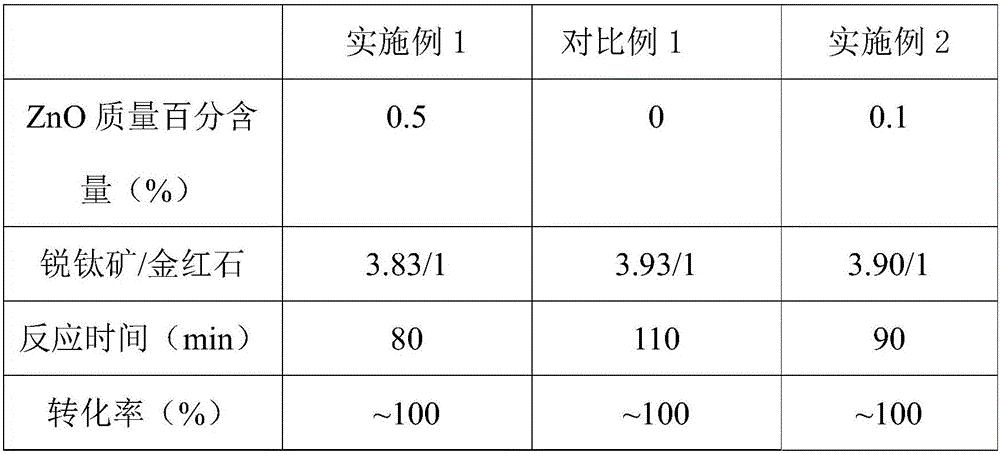Heterogenous photocatalyst with multichannel carrier separation function and preparation method and application of heterogenous photocatalyst with multichannel carrier separation function
A photocatalyst and carrier technology, applied in the field of photocatalytic materials, can solve the problems of low activity, difficult to interweave to form a phase interface, complex preparation process, etc., achieve simple preparation method, excellent photocatalytic performance, and promote photocatalytic reaction. Effect
- Summary
- Abstract
- Description
- Claims
- Application Information
AI Technical Summary
Problems solved by technology
Method used
Image
Examples
Embodiment 1
[0019] A preparation method of a ZnO / P25 heterogeneous photocatalyst with multi-channel carrier separation function: (1) at room temperature, zinc acetate is dissolved in pure water to configure an aqueous solution of zinc acetate with a concentration of 0.5% by weight . (2) Pour the P25 powder into the solution and fully disperse it. (3) The solution in step (2) was dried at a constant temperature of 120° C. for 10 h, and then calcined at 500° C. for 6 h to obtain the final product. by TiO 2 The strongest characteristic peak intensity of the two phases is used for semi-quantitative analysis of the content of the two phases. The results show that the content ratio of anatase to rutile is about 3.83 / 1. figure 1 It is the HRTEM figure of embodiment 1; figure 2 It is a schematic diagram of the multi-channel separation carrier mechanism in the ZnO / P25 heterojunction.
Embodiment 2
[0023] A preparation method of ZnO / P25 heterogeneous photocatalyst with multi-channel carrier separation function: (1) at room temperature, zinc nitrate hydrate is dissolved in pure water, and it is configured as nitric acid with a concentration of 0.1% by weight Zinc solution. (2) Pour the P25 powder into the solution and fully disperse it. (3) The solution in step (2) was dried at a constant temperature of 120° C. for 10 h, and then calcined at 600° C. for 6 h to obtain the final product. The ratio of anatase to rutile content is about 3.90 / 1.
Embodiment 3
[0025] Get 0.2g embodiment 1-2 and the catalyst described in comparative example respectively, uniform coating film is in 7.0cm 2 On the watch glass, and placed at the bottom of the reactor, with mixed gas (O 2 :N 2 =1:3) Purging for 1h to remove CO in the reactor 2 . Toluene visible photocatalytic reaction experimental conditions: toluene gas is bubbled, mixed gas (O 2 :N 2 =1:3) into the reaction kettle, control the initial concentration of toluene in the reaction kettle to be ~200ppm, and the relative humidity to be ~16%. balance. A 200w xenon lamp equipped with a UV reflector is used as a simulated ultraviolet light source (λ=300-400nm, and the light intensity is 200mw cm -2 ), reacted for 120min, took a sample every 10min, and detected the concentration of toluene and GC2060,FID) by gas chromatography (GC7900,FID) to detect CO 2 Yield. And use the following formula to calculate the conversion rate: where n Tol,0 is the amount of toluene initial substance (mol),...
PUM
 Login to View More
Login to View More Abstract
Description
Claims
Application Information
 Login to View More
Login to View More - R&D
- Intellectual Property
- Life Sciences
- Materials
- Tech Scout
- Unparalleled Data Quality
- Higher Quality Content
- 60% Fewer Hallucinations
Browse by: Latest US Patents, China's latest patents, Technical Efficacy Thesaurus, Application Domain, Technology Topic, Popular Technical Reports.
© 2025 PatSnap. All rights reserved.Legal|Privacy policy|Modern Slavery Act Transparency Statement|Sitemap|About US| Contact US: help@patsnap.com



